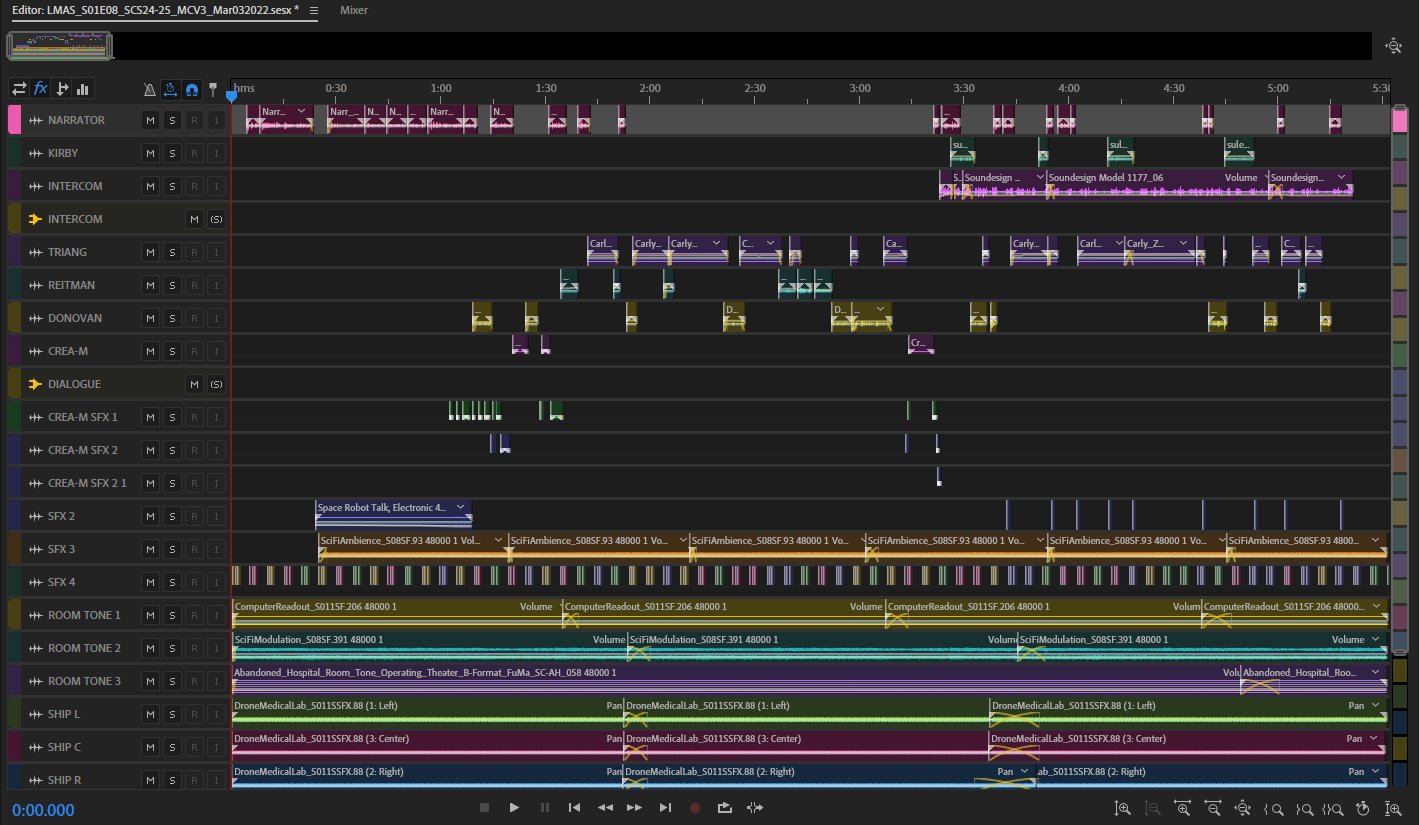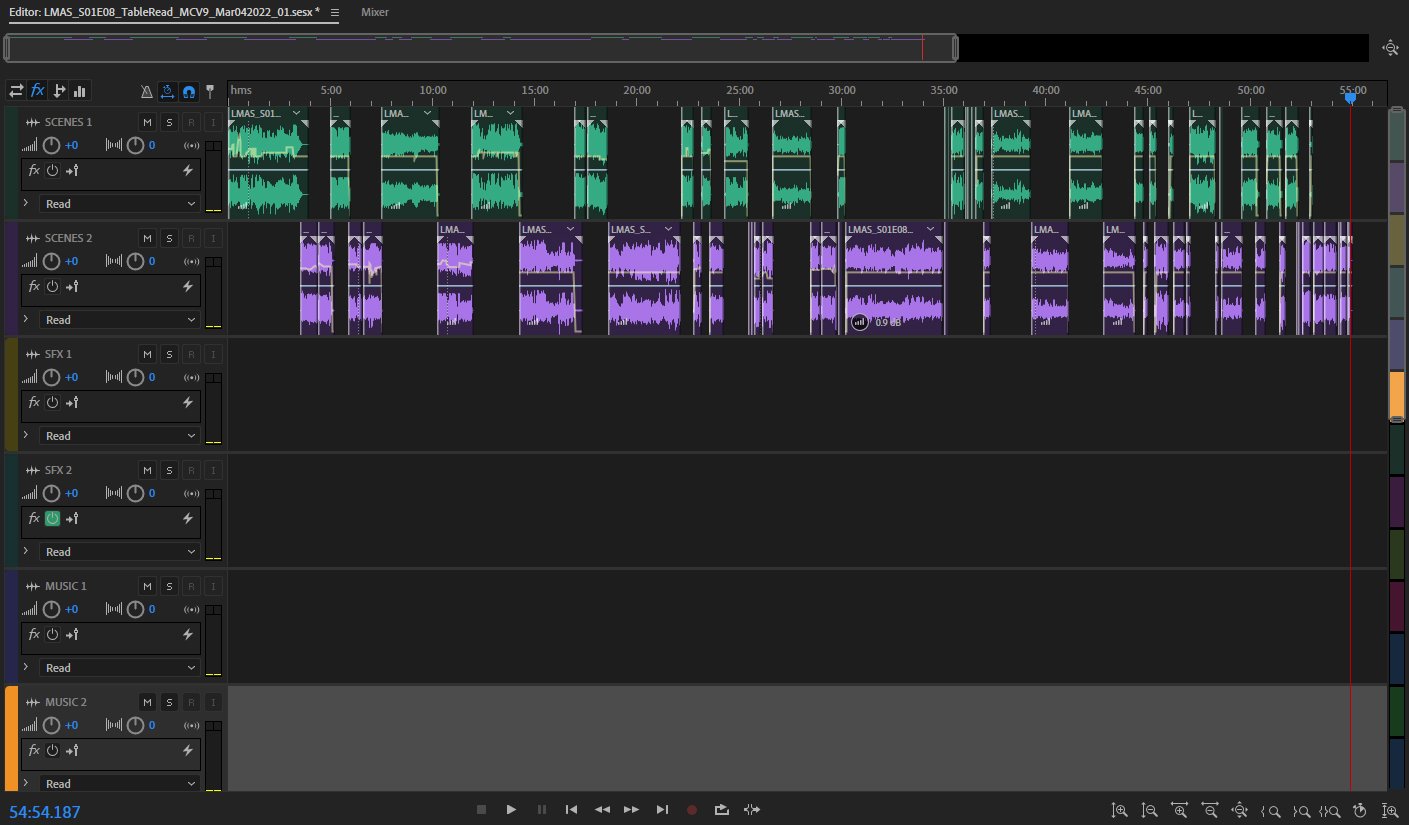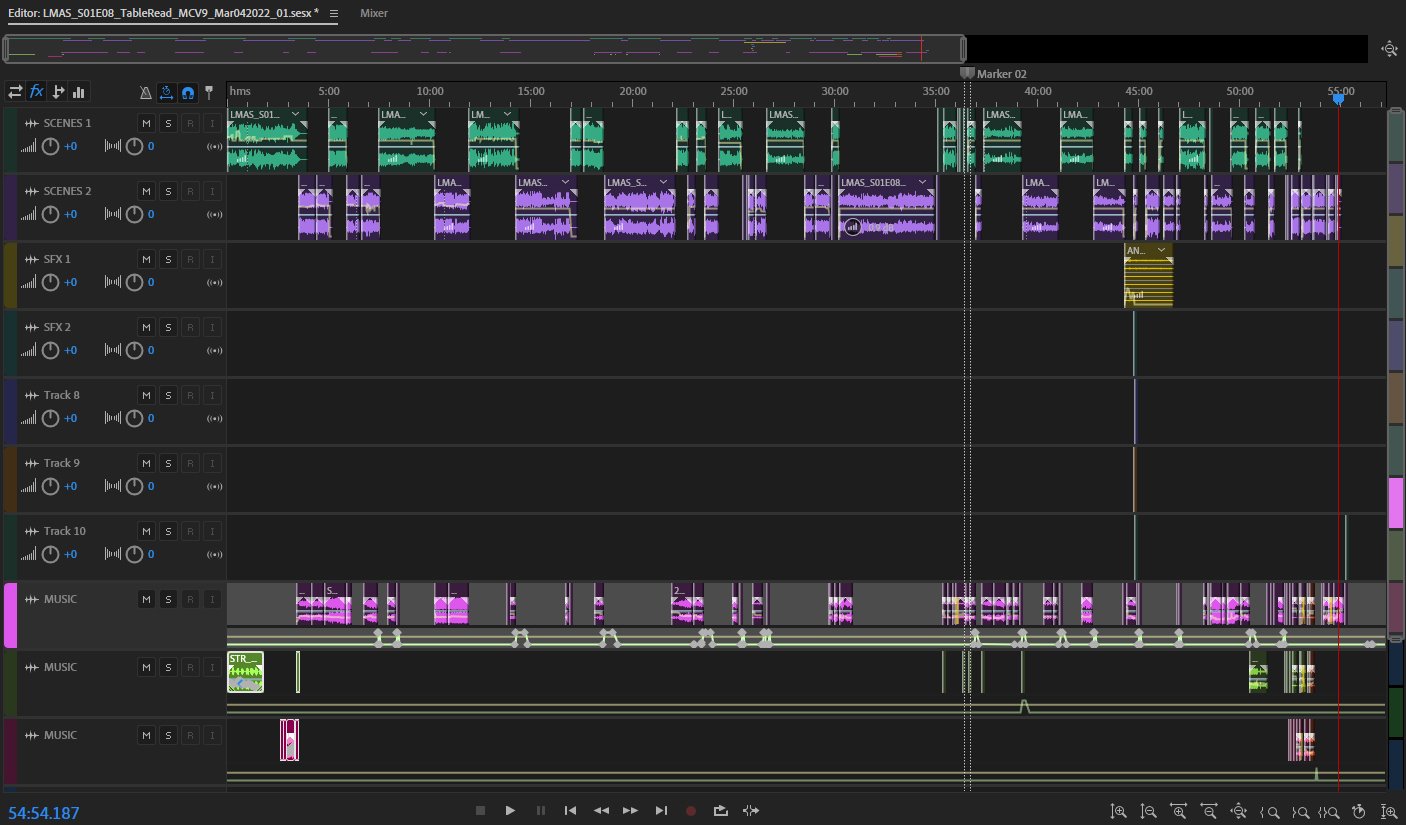How to Make a Scripted Fiction
As the days get warmer and my city sits in the sweet spot between snow season and allergy season, I’ve eagerly been making picnic plans with friends I haven’t seen in many months. In my recent get-togethers, I’ve naturally been asked what I’ve been up to all winter.
The only possible way I can think to respond is by saying: “I’ve been working on making a spaceship sound like a spaceship.”
Confused? You and my friends both.
See, I work as a sound designer — in your average podcast industry job, that’s the person who adds music to the base of interviews to make them more interesting. But I specialize in sound design for scripted fiction; what the commercial radio industry (or your grandmother) might refer to as “radio dramas.”
Don’t let the connotation with olde tyme radio fool you. Radio dramas have been rebranded as scripted fiction, and they’re coming back in a big way. Big-name content brands are making audio series for some of their beloved characters, big-name actors are voicing the roles in acclaimed audio dramas, and big-name newspapers are writing definitely-not-sponsored articles about up-and-coming companies getting into the scripted fiction game. And I am fortunate to be the person that brings these projects to life through sound.
Back to making a spaceship sound like a spaceship.
For the past few weeks, I’ve been working on the final episode of a new podcast series from Kelly&Kelly, called Let’s Make a Sci-Fi. The series stars three comedians as they set out to write a pilot script for a serious science-fiction TV show.
The problem is, none of them have ever written anything serious before.
The hosts get help from industry experts along the way, and the end result of this adventure comes in the form of an intergalactic caper set on a spaceship 600 years in the future, called Progeny. In the final episode, you get to hear the script read by actors as an audio drama, And lucky me, I got to do the sound design for all of it!
Let’s Make A Sci-Fi is laugh-out-loud funny, the script for Progeny is compelling, and in celebration of these two delightful bits of intertwined content, I want to share with you how I put together the heard world of this audio drama.
And in case you’re interested in making your own audio drama (trust me, it’s fun!) I’ll also share some tips I’ve picked up in my years of doing this work.
Before we get into what makes Progeny sound the way it does, let’s go over some basics.
Here’s what you need to make a scripted fiction:
A script made for radio: you can write one yourself, pay someone for theirs, or grab and adapt something from the public domain. Just make sure the story in your script can be conveyed without visual cues.
Sound Effects: If you want your end product to sound professional, I suggest using a sound effects library, like Universal or Pro Sound Effects. Some less expensive ways to get your effects include the Free Sound Project (be sure to get acquainted with creative commons licenses before going this route), or to go out and make ‘em yourself.
Music: There are tons of music libraries out there. My go-to is APM Music, but there are less expensive options, like Blue Dot Sessions of Sound Of Picture Library. You can also look for free music on the Free Music Archive, but as above, be sure to abide by each song’s creative commons license.
A digital audio workstation with multitrack capability: This is important. You need to be able to record and edit each actor’s audio with separate files, on separate tracks. Personally, I use Adobe Audition, but cheaper options are available. Audacity is a free, open-source program that works well, but in my experience it can be buggy. Another option is Reaper, it’s a one-time payment software that some of the sound design greats use, like Brendan Baker.
Audio plug-ins: In my opinion, plug-ins can make or break your scripted fiction. You can give your world depth with something like convolution reverb, or you can change where your dialogue sounds like it’s coming from with an FFT filter. Plug-ins are where you can really get creative with your audio, so mess around with them.
Now that you’ve got your basics together to make your opus, let’s walk through what you need to do to bring your scripted fiction to life, with some examples from Progeny…
Step 1: Set up your dialogue
Get your actors together in a room (or online over a meeting app with multitrack capability, like Riverside or Zoom), and record each on a separate mic and/or track. This will make editing your dialogue together later much easier. For Progeny, we had a mix of a few actors in one room, and a few joining from other cities via Riverside.
Once you’ve got the dialogue recorded, line up the files in a multitrack session of your choice. You’ll want to feed all dialogue tracks through a bus track as well. I’ll explain why later.
Three dialogue tracks running into one bus. Beep beep!
Then, you’ll want to push your actors’ lines closer together. Dramatic dialogue is usually quicker-paced than a real-life conversation. Listen back once you’ve pushed all your dialogue together and ask yourself, “Does this conversation hold my attention?”
Step 2: Build your environment
Now the fun part. It’s time to make the world that your characters live in.
Before you start gathering your sound effects, think about how the atmosphere your story is set in will affect the sounds we hear.
Is your fiction set in the present, or in a different time?
What does that time and space sound like?
Is the whole story set in one room, or will you have to change the atmosphere scene-by-scene?
Progeny has two distinct settings: a decrepit behemoth of a spaceship on its last legs, and a newer, more sleek vessel for a small crew. Ship A was designed with echoey hallways and a looming engine rumble to give it the feeling of a vessel on its last legs, and Ship B got some electronic buzzes and other futuristic noises to portray its new tech.
Have a listen to how different these two ships sound:
A screenshot of the build I made for Ship B. Look at all of those little beeps!
You’ve designed the environment, now it’s time to put your characters in the world and give sound to what they’re doing.
Think about all of the movements and actions that are happening in the scene. You want to paint as vivid of a mental picture as possible with your sounds. Don’t just add sound for big actions: consider adding little things, like a character’s clothes rustling as they move their body, or footsteps as they walk around*.
(*Note: For Progeny, I was asked not to give my characters footsteps. The writers wanted the project to sound more like a “table read.” Not the choice I would have made personally, but sometimes that’s how things go!)
Once you’ve got all your sound effects in place, make a bus track for action sounds taking place in the scene as you did with your dialogue tracks. This will help for when we…
Step 3: Build dimension in your “sound shot” with panning, mixing and track effects
I have no formal training in sound design, so this is probably not at all the right word, but to make scenes more dynamic, I sometimes change the focal point of my sound — what I call the “sound shot.”
Think of it like you would a video camera’s movement: Is the shot static, like a sitcom stage, and the characters come in and out of frame? Is the shot moving around with a specific character, and we get their perspective of the world moving around them? This can be made possible by panning. Just be sure that if you’re moving a character around with panning, the sound effects attached to them (walking, clothing, etc.) are moving in the same direction!
Finally, when it comes to the finishing touch of building dimension, I add different effects to the two main bus tracks (one for dialogue, one for the effects in the scene). I find using a bus track makes it easier to get a uniform sound from all of my dialogue and SFX, as opposed to trying to mix each track with effects individually.
For dialogue, I’ll add automated EQ, like Izotope’s Neutron plugin. A trick I learned from the creative director of Kelly&Kelly is to add a bit of convolution reverb to your SFX, as the echo will help make your sounds feel more real, more in-the-room. Have a listen to this scene between two characters with effects and panning off, and then with those effects on. Can you hear how it elevates the story?
When you’re happy with how your scene sounds, mix it down to one file and build a separate multitrack with all the scenes in your scripted fiction. This will make it easier on your computer’s processor in our next step.
Those are all my scenes. Can you imagine what this session would look like if I didn’t make each of these their own files? Messy!
Step 4: Add drama and nuance with music
Believe it or not, I would say adding music to an audio fiction effectively is one of the hardest things to figure out. If you’ve dabbled in non-fiction podcasting, you know that you don’t want the music in a scene to take away from the story your subject or host is telling. The same goes for using music in a scripted fiction.
BUT, music can also help with exposition. For example, in Progeny, protagonist Kirby is known for being a creative thinker who constantly comes up with inventions to make her existence living in a space cult just a little better. We used music to elevate scenes where Kirby’s creative nature comes into play. Take a listen to this scene with and without music:
Add a little song here, an extra bit of SFX there…
Step 5: Listen, listen, and listen again
The thing about having a project with lots of moving parts is that once they’re all lined up together, they may not work the way you want them to.
In audio fiction, you want to make sure scenes that happen in the same room can convey that. You want to make sure your music works all the way through the piece, as well. When it comes to Progeny, I’d say each scene had about three or four drafts each, and at the end of the project, I had completed 10 versions, each one better than the last. Employ a friend to have a listen for you, they might hear something that stands out once your ears are tired of re-listening.
And that’s it! Hundreds of hours later, and you’ve got an entire world made by your hands and your ears. As you can see, scripted fiction sound design is a long, tedious process. But believe me when I say it’s a labour of love. Designing the sound for Progeny was such a delight.
The projects I work on are often set in the modern day on Earth, so it was awesome having the opportunity to create what I imagine society will sound like in 600 years. If you get the gumption to make an audio drama yourself, I guarantee you won’t regret your decision once your baby is out there in the world.







